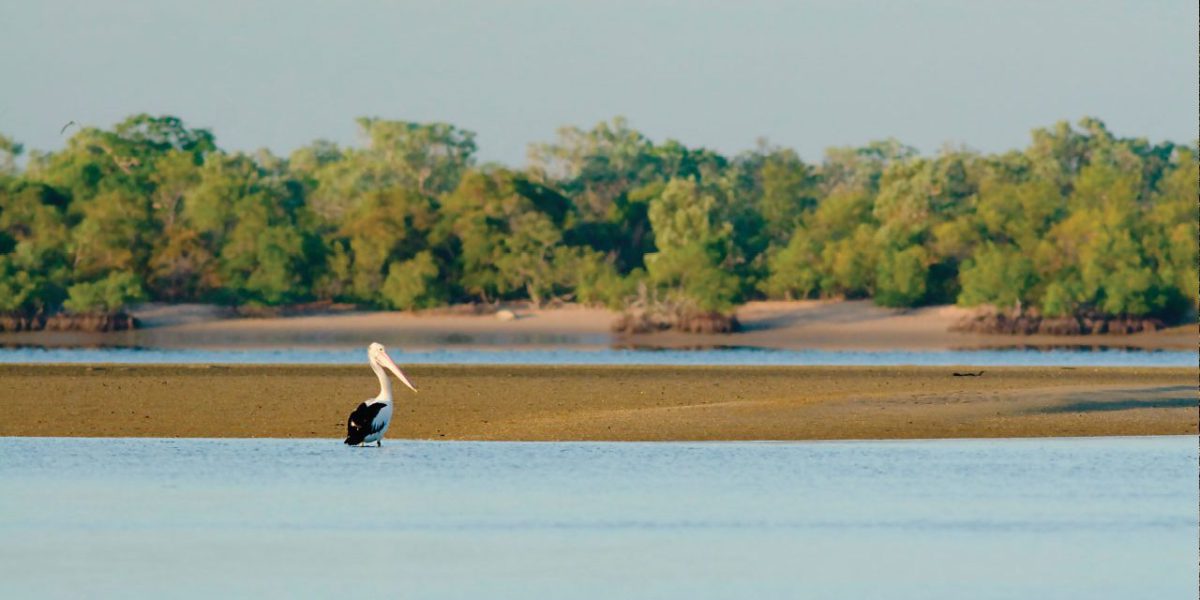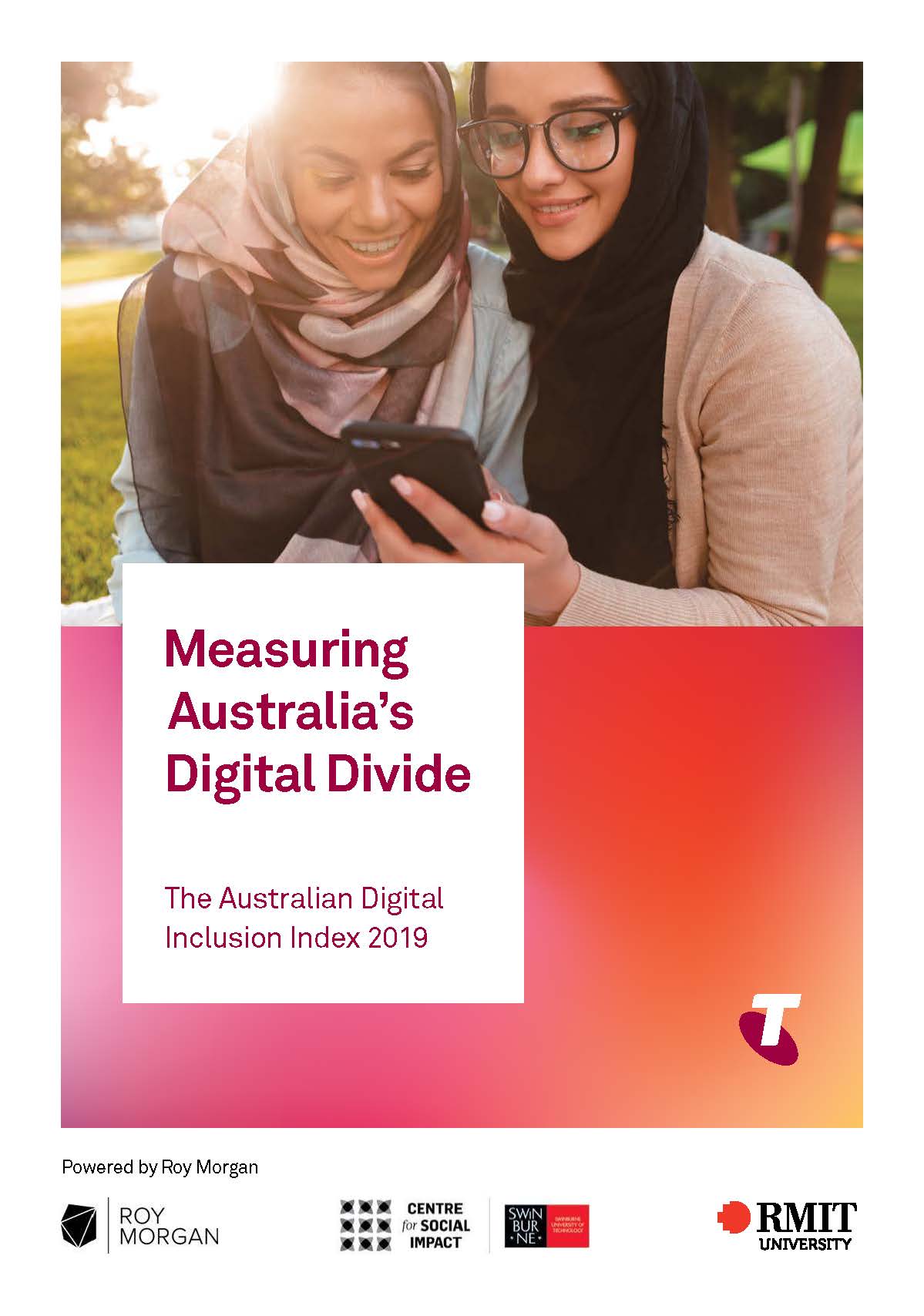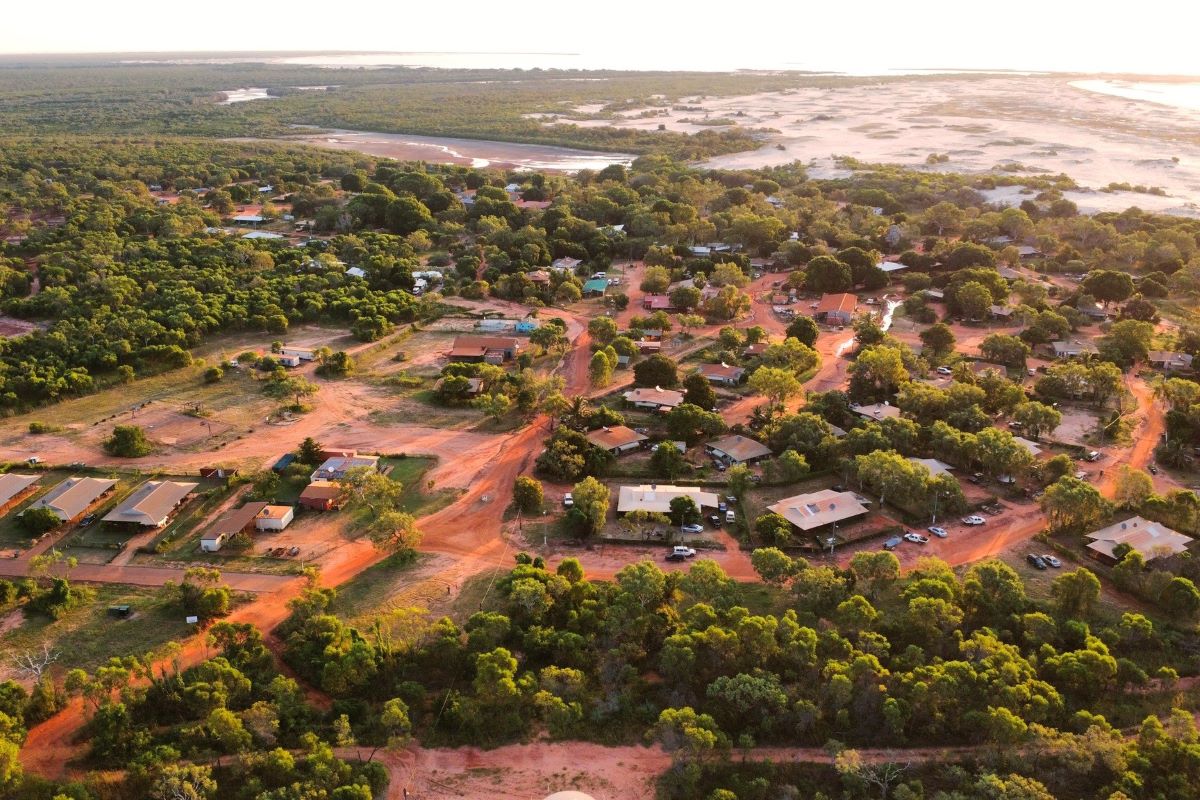This case study was originally published in the 2019 Australian Digital Inclusion Index report, and is derived from the Roy Morgan Single Source dataset. As of 2021, the Australian Digital Inclusion Index is based on the Australian Internet Usage Survey (AIUS). The numerical results of this case study cannot be compared with the refreshed ADII data.
In 2019, Indigenous Australians living in urban and regional Australia report a lower level of digital inclusion than the Australian average. Research conducted in the remote community of Pormpuraaw in far north QLD indicates that digital inclusion for Indigenous Australians further diminishes with remoteness, particularly in relation to Access and Affordability.
The ADII is one of few quantitative data sources that provides insights into the digital inclusion of Indigenous Australians1, although its coverage does not extend to remote communities. The 2019 ADII results show that despite a continuous annual rise in digital inclusion since 2015, the ADII score for Indigenous Australians in urban and regional Australia (55.1) remains 6.8 points lower than the national average (61.9). Indigenous Australians based in these areas trailed the national average on all three of ADII digital inclusion dimensions: Access, Affordability and Digital Ability.
To extend our knowledge of the nature and extent of digital inclusion for Indigenous Australians beyond those living in urban and regional settings, an ADII Supplementary Survey2 was conducted with 145 Indigenous Australians from the remote community of Pormpuraaw in November 2018. Pormpuraaw is a community of approximately 750 people located in QLD on the west coast of Cape York, about 480 kilometres below the northern most point of Australia. This research built upon similar survey research conducted for the 2018 ADII report in Ali Curung, a remote Indigenous community of approximately 500 people located 380 kilometres north of Alice Springs3 in the NT. Given the diversity of remote Indigenous communities, we caution that the Pormpuraaw and Ali Curung results should not be viewed as representative of all remote-living Indigenous Australians. However, the Pormpuraaw results do present a similar picture of digital inclusion to that of Ali Curung.
The digital inclusion score for Indigenous Australians in Pormpuraaw is 36.7, some 25.2 points lower than the Australian average (61.9) and 18.4 points lower than that recorded by Indigenous Australians in urban and regional areas. As is the case in Ali Curung, the very low level of digital inclusion recorded in Pormpuraaw reflects poor Access and Affordability.
The low Access score recorded in Pormpuraaw (50.1) is underpinned by a reliance on mobile connectivity. Although nine in ten respondents maintained an internet connection, only two of the 145 people surveyed had fixed broadband. Furthermore, almost all respondents relied solely on pre-paid services. This reliance on mobile pre-paid connectivity mirrors that of Ali Curung and the results of other studies in remote Indigenous communities4. It carries a range of direct and indirect consequences relating to Access.
For instance, mobile plans provide smaller data allowances than fixed services and this, along with the greater opportunity for pre-paid users to drift in and out of connectivity5, may be a factor in curtailing the regularity of internet use – 57% of Indigenous Australians in Pormpuraaw access the internet daily compared to the national figure of 87%.
Echoing patterns in the Ali Curung data, Indigenous Australians in Pormpuraaw return a very low Affordability score (9.0). Again, this is linked to the prevalence of mobile-only pre-paid use. Although mobile data charges have fallen in recent years, a gigabyte of data remains considerably more expensive on mobile networks than via fixed broadband. In Pormpuraaw this translates into a Value of Expenditure score of 3.0, some 60.9 points below the national average. Like in Ali Curung, Indigenous Australians in Pormpuraaw also fared poorly in relation to Relative Expenditure. With expenditure on internet access accounting for 3.3% of household income, Indigenous Australians in Pormpuraaw record a Relative Expenditure score of 15.1. National average expenditure on internet access is 1.18% of household income which translates into a Relative Expenditure score of 54.6.
Higher costs, lower data allowances, and device limitations associated with mobile broadband access have tended to diminish Digital Ability scores for those that rely solely on this form of access. But, as was found to be the case in Ali Curung, Indigenous Australians in Pormpuraaw have a higher level of digital ability than the average Australian, recording a Digital Ability score of 51.4 compared to the national average of 50.8. Existing qualitative research finds that for those living in remote areas the internet is an important point of social connection and vital conduit for accessing information and services6.
This is reflected in the breadth and intensity of digital activities undertaken by Indigenous Australians in Pormpuraaw. They are more likely than the average Australian to use the internet to engage in general web surfing, undertake shopping and banking, access government services and stream or download media content purchasing and selling goods online and using online audio or audio/video calling and messaging services.
The Pormpuraaw and Ali Curung findings reveal some of the complexities of digital inclusion in remote Indigenous communities. Local patterns of use suggest the internet is an important lifeline for those in remote communities, but accessing it comes at a higher cost than it does for those in the cities and towns. There is some evidence that the preference for prepaid mobile-only access by Indigenous Australians in remote communities is a response to affordability concerns. While pre-paid plans may reduce financially vulnerabilities by enabling more direct expenditure management than post-paid contracts7, they exacerbate other aspects of affordability related to value for expenditure (particularly as pre-paid access is currently limited to mobile network access). A more comprehensive approach is needed to address the issue of internet affordability for Indigenous Australians in remote communities. The Digital Inclusion Plan outlined by delegates of the 2019 Shaping Our Digital Futures Indigenous Focus Day calls for such an approach. The plan points to the need for more affordable pre-paid options, as well as an expansion of community Wi-Fi networks and unmetered access to key online services8.
Further information
For more information, including related data tables and the full citation list, please refer to the 2019 Australian Digital Inclusion Index.
References and footnotes
[1] For a review of quantitative data sources on digital inclusion and Indigenous Australians see Rennie et. al. (2019).
[2] See Appendix for a description of the ADII Supplementary Survey methodology.
[3] Both the Ali Curung and Pormpuraaw ADII supplementary surveys were administered face-to-face (using a tablet to record data) by the Centre for Appropriate Technology (CfAT) with local assistance.
[4] See Rennie et. al. (2016) pages 152-4 for a useful survey of the existing literature on the prevalence of mobile phone use in remote communities. Rennie’s notion of demic deal-breakers offers a framework for understanding how the “consumer preference for pre-paid billing, as well as practical difficulties associated with satellite internet connections, means that households [in remote communities] are more likely to go without internet than enter into satellite internet contracts” (Rennie, 2015, p.7).
[5] Although not focused on prepaid internet access, research conducted by Radoll & Hunter (2017) reveals that Indigenous Australians in remote and very remote areas are much more likely to move in and out of internet connectivity than the Australian average.
[6] See: Rennie et. al. (2016). These benefits, however, do not come without concerns. Work by Rennie et. al. (2018) conducted in partnership with Telstra, explores some of the tensions arisingout of the intersection of digital technologies and Aboriginal forms of governance.
[7] See: Rennie et. al. (2016).
[8] FNMA (2019).
Citation
Thomas, J, Barraket, J, Wilson, C, Ewing, S, MacDonald, T, Tucker, J & Rennie, E, 2019, Measuring Australia’s Digital Divide: The Australian Digital Inclusion Index 2019, RMIT University, Melbourne, for Telstra. DOI: www.dx.doi.org/10.25916/5d6478f373869







